How to Start an Amazon FBA Business: A 101 Guide (2025)
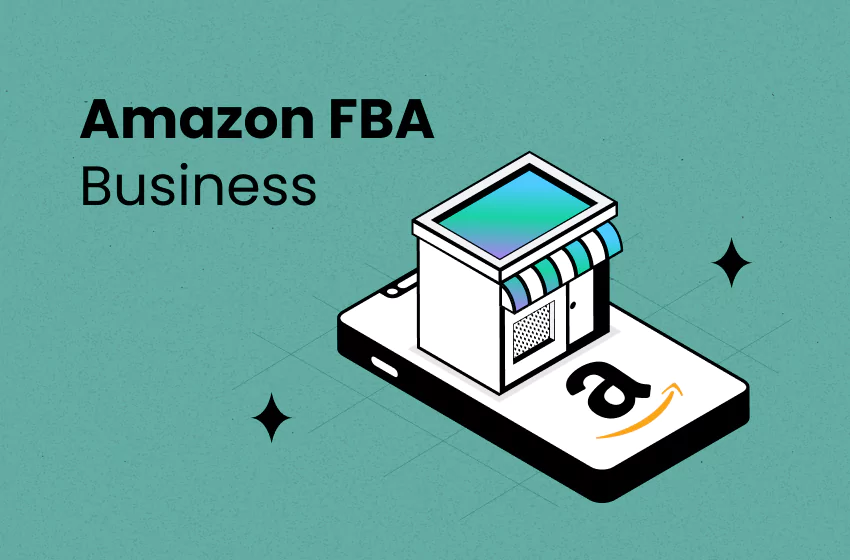
If you are looking to dive into the world of Amazon, learning how to start an Amazon FBA business is one of the best ways to launch an online store and succeed.
In 2025, selling on Amazon is a promising method to earn money. In fact, Amazon has nearly 2 million small and midsize third-party businesses selling on Amazon globally, and in 2024, it is reported that 89% of Amazon sellers are profitable.
With FBA, all you have to do is choose the products you want to offer and market them; Amazon will handle the rest. Although setting up an Amazon business is not quite difficult, the processes involved may be confusing to some people.
Therefore, we are here to help you with our step-by-step guide which will facilitate the beginning of your journey. Let’s get into it.
What is Amazon FBA?
Amazon FBA is a merchant fulfillment method provided by Amazon. With FBA, you ship your goods to an Amazon fulfillment center, where they will be stored, packaged, and delivered right to the customer's door, along with any returns or customer support requests.
Thus, you can concentrate on handling the other aspects of your business while leaving Amazon to manage order fulfillment and shipping. However, though FBA offers Amazon sellers ease and convenience, it comes with fees. That's why some sellers on the marketplace opt for FBM (Fulfilment By Merchants) instead.
Beginners’ Guide on How to Start an Amazon FBA Business
To start selling with Amazon FBA, you will need to prepare carefully, especially with the newbies. You can find tons of materials and tutorials on how to sell on Amazon for beginners through the FBA method in 2023.
Yet, if you don’t have much time to look around, we present to you our guide of 11 essential steps in detail to help you embark on this journey.
Step 1: Develop your Amazon FBA business plan
To start an Amazon FBA business, you should have a plan in place to give you a road map to follow, ensuring that everything is on the right track.
When creating your business plan, you will need to decide on the funding to launch your business. Whatever kind of business you start, there will always be costs. eCommerce businesses on Amazon are not an exception.
Inventory, which is typically your biggest expenditure, as well as numerous other costs like insurance, computers, office supplies, licenses, software, etc. will all require a great deal of capital to cover. We advise spending at least $2,000 and ideally between $3,000 and $5,000.
Personal savings, support from family and friends, credit card financing, bank loans, crowdfunding, and angel investors are the primary funding options to take into account when you look for capital.
Consider a viable business model for your proposal after that. There are numerous business models, but you must carefully select the one that best meets your requirements. Here are the five most common business models on Amazon:
- Private Label: Sellers who use the private label business model must purchase goods straight from manufacturers. However, in this instance, the goods are produced in accordance with your instructions and are branded with your company name rather than the manufacturers'.
- Wholesale: You buy goods in large quantities from manufacturers and then resell them on Amazon at retail rates. Under this model, you offer existing, already-branded products as opposed to the private label model.
- Retail Arbitrage: People who use this business model will need to purchase goods from brick-and-mortar and internet retailers, then resell them with a markup on Amazon.
- Dropshipping: This model enables sellers to ship goods to customers directly after fulfilling orders from a third party.
- Handmade: You make stunning, handcrafted, and unique items and sell them on Amazon. It works best for artists who want to profit from the sale of their creations.
If you are just starting out selling on Amazon, it is highly advised that you choose to offer your own private-label products with your brand name on them.
This model is ideal since you can own and manage your brand and products closely. You can also establish your own price to guarantee healthy margins and brand infringement is never a concern.
Step 2: Do careful product research
The following step on how to start an Amazon FBA business is to decide on the kind of product you will sell on Amazon. The key here is to find a product with low competition and high-profit potential.
Remember to consider your target market, other sellers on the Amazon marketplace, and whether or not there is a market niche that you can tap into when performing product research. Also, consider how the product category you want to offer fits into the market at the moment.
You will run the chance of financial loss if you pick the wrong products. Additionally, you may waste your time and effort in the long run. So many factors need to be taken into account when choosing products to offer and some of them are:
- Product profitability: It is best to choose a product from the most lucrative categories. You should carefully calculate the revenue of a product and keep in mind to pick products with a profit margin of $20 to $70.
- Market demand: The level of demand for a product typically indicates how profitable it can be. As a result, be careful to consider product demand when conducting your product research. Besides, you should avoid seasonal products since the demand for them is often “seasonal”.
- How many products are exactly like yours: This will show whether there are any chances for new sellers. You can research the brands in that market to determine the level of competition you may encounter.
- Product size and weight: If you want to save money on delivery, it is ideal to select compact, light items.
- Product availability and ease of sourcing: You don't want to lose customers by having a prolonged stock shortage. So make sure you sell a product that is always available to restock quickly.
Step 3: Set up your business entity
Each country & territory has its own set of regulations, so be careful to check for the requirements. You can employ an attorney to assist you in creating a legitimate business entity or select an online legal service that is more affordable and will guide you through the process smoothly.
If your business is based in the US, here is what you need to do:
- You need to register your business with the Internal Revenue Service (IRS) to receive an Employer Identification Number (EIN) as most banks will require that you have an EIN to create an account. Additionally, since the IRS uses your EIN to monitor your payroll tax payments, you will need one in order to hire workers.
- You can open a bank account with your EIN under the name of your company.
- After that, you should obtain a business credit card for your Amazon business to help you distinguish between personal and business expenses. You can register for a business credit card either through a bank or through a credit card company.
- Finally, you will need to obtain the necessary business licenses and permits. Again, the requirements vary by city, state, and county. Yet, the following requirements exist in almost all cities, states, and/or counties, including:
- General Business License
- Sales Tax License or Seller’s Permit
- Zoning Approval
- Food Service, Processing, and/or Warehouse Licensing
- Health Facility Licensing & Certification
- Fire Department Approval
Step 4: Create an Amazon seller account
After completing the above steps on how to start an Amazon FBA business, you now need to register an Amazon seller account. There are two different types of seller accounts that Amazon provides, including:
- Individual account: For anyone who plans to sell <40 items per month. You will have to pay $0.99 per transaction, which is deducted post-sale rather than up-front.
- Professional account: For anyone who plans to sell >40 items per month. There will be a monthly fee of $39.99 for professional sellers.
After you finish registering your seller central account, you need to select the FBA fulfillment method. The Amazon FBA sign-up procedure is easy and only requires a few steps.
Furthermore, when setting up the account, you will need to decide on a company name for your Amazon seller account. Here are some tips for naming your business:
- Create a name that reflects the essence of your brand and the goods you offer
- Keep it simple
- Verify that your desired name is available by checking it against trademark databases and your state's list of registered business names
When you have the ideal brand name, you should register it with Amazon and file for copyright protection to prevent others from using it. Amazon provides sellers a free brand registry service to protect their brands on the platform from intellectual property violations and unauthorized sale of your goods.
However, Amazon only permits you to enroll in the brand registry when you already have a trademark or are applying for one. Therefore, we advise submitting as soon as you can because trademark approval can take 6 to 9 months.
Step 5: Find suppliers and source your products
Typically, this is the most difficult step in the process. The ideal situation would be that you already had reliable suppliers who would sell your goods to you at a fair price. Otherwise, you should start looking for suppliers who offer high-quality products and a variety of choices with fair return policies.
In fact, the majority of suppliers will be based in China while there isn't much production in the US, so it is likely that Chinese suppliers will be your choice. But don't worry because getting your products shipped from China to the US is not a complicated procedure anymore.
Therefore, we recommend you use a free website like Alibaba to find your suppliers more quickly.
Once you have chosen a supplier, it is crucial to start with a small test order of 100 units or less. These samples can be used to research the market and get customer feedback. This kind of testing is a great method to analyze the market for your goods.
Remember to stay in contact with your supplier to prevent misunderstandings and to get updates on the production of your products so that you can make any necessary revisions as soon as possible
Step 6: Create and optimize your product listings
After finding a supplier, the next step is to create a product listing. You have the option to either make a brand-new product listing or add items to an already existing one.
Your product, along with your price and terms, can be added to that list using the seller central dashboard. Once your product has been added, click on sell yours. After completing the form, click the save and finish buttons.
The elite competitors in this industry use Amazon SEO strategies to optimize their product listings and make them their secret weapons. And so do you! You can make listings that are well-optimized by paying attention to the following elements in your listings, such as:
- Product title: The goal or use of the product should be clearly stated in the title.
- Product descriptions: Clearly state how your products will help your customers. Remember to add relevant keywords to your descriptions.
- Product images: You can use more than one product image but they should be beautiful and of high quality.
- Product reviews: Display product reviews from current customers to help persuade new ones.
When uploading your products, you must also decide on the pricing. The selling price of your products is really important, so make sure you are setting prices that cover all of your costs while maintaining a reasonable Amazon profit margin.
Once you have determined a price for your product, you can adjust it upward or downward in response to changes in market demand.
Step 7: Manage inventory and ship your products to the Amazon fulfillment centers
Despite the fact that Amazon monitors inventory automatically and lowers the item count as goods are sold off, inventory management is still necessary.
You can directly adjust inventory by altering the units that are currently available via the seller central dashboard. You can also use bulk uploads and inventory feeds to handle inventory. For better convenience, you can make use of the eCommerce platform, inventory software, and Amazon seller tools to facilitate your inventory management.
When an order is placed, check your products before delivering them to the fulfillment center. Make sure they are of good quality and carefully package them as well.
Amazon offers a variety of shipment options, from air freight, and trucking to parcel delivery services like FedEx or USPS with clear guidelines to ensure you deliver your products properly. Thus, you should follow these guidelines closely.
Step 8: Obtain business insurance for your Amazon business
All Amazon sellers must have business insurance that covers product liability for both you and Amazon. We save this step here because the insurance provider needs to know all of the specifics before writing a policy, including what your product is, where your supplier is located, and many other things.
You should take into account the following business insurance policies for your Amazon business:
- General liability insurance
- Auto insurance
- Workers’ compensation insurance
- Commercial property insurance
- Business interruption insurance
We suggest that you find an insurance agent, describe your business in detail and its needs to them, and they will propose plans that meet those requirements.
Step 9: Install the software required to efficiently run your business
To run your business on Amazon with ease, you may need some useful tools. Hence, we suggest finding and installing the following key pieces of software:
- Amazon seller software: Many aspects of your business, including pricing, inventory control, and customer service, can be automated with the aid of this software.
- Inventory management software: You can handle inventory effortlessly with the aid of this kind of software. If you sell goods outside of the Amazon platform, it can also assist with order fulfillment and product returns.
- Accounting software: If you want to keep track of revenue, costs, taxes, and other financial factors closely, accounting software is a must.
Step 10: Promote your product on Amazon
Since your product is new and has no metrics yet, Amazon cannot actively market it. Therefore, you need to advertise your goods on Amazon.
Utilizing Amazon's PPC, or pay-per-click program, is the simplest strategy to market your products. You can pay to have Amazon customers see your products when they enter relevant search terms.
Another strategy to draw consumers to your Amazon store you can consider is to create social media accounts in your brand’s name.
Customers will be able to discover and interact with your Amazon business with the help of Facebook, Twitter, LinkedIn, and/or other social media networks. You might also need to run advertisements on these networks to quickly increase traffic to your product pages on Amazon.
Step 11: Make your sales
If you have completed all the required steps on how to start an Amazon FBA business, success is within reach. As an FBA seller, making sales is not too difficult; however, it relies on how well you can operate your business and a thorough understanding of the market.
Besides, monitoring customer feedback is crucial. This will help you spot areas where improvements need to be made in order to increase customer satisfaction and loyalty. Ultimately, your relationship with them will be stronger, resulting in consistent sales growth.
Overall, you can run a prosperous Amazon FBA business with confidence by taking to the above-listed steps.
How to Grow your Amazon FBA Business?
Amazon FBA is a promising business for anyone but if you neither prepare well nor have the right skills, you won’t be successful for long. After learning how to start an Amazon business using FBA, you need to educate yourself about how to run the business smoothly.
To guarantee that your business is operating effectively and profitably in the long term, take into account the following strategies:
1. Keeping a close eye on inventory
You need to handle the amount of inventory flawlessly to meet demand and avoid having too much inventory in Amazon's warehouses. To minimize storage costs, we suggest keeping 3 to 6 months' worth of inventory in Amazon's warehouse at any given time (with the exception of around the holidays).
2. Optimizing your advertising campaigns
Focus on improving your PPC campaigns every few weeks to get the best potential results from your ads. You can run search keywords reports to better comprehend how each individual keyword is performing. Then, remove underperforming keywords and raise bids on successful ones.
To raise the chances of success in winning your bids on keywords, take a look at our guide on how to map out an effective Amazon Bidding strategy for your campaign.
3. Expanding your product line
Although you might be eager to start your Amazon FBA business, don’t rush. Taking your time will enable you to become accustomed to the procedures, reduce mistakes, and collect data to make well-informed decisions down the road.
When you start seeing a growing profit, you can use your Amazon experience to broaden your product line.
You should only add one product at a time to your FBA and take your time to see if it still works. It may be time-consuming to figure out some products that have a high return rate and are worth selling through FBA.
4. Brand building
The branding of your business is crucial. Customers are usually seeking out professional and trustworthy vendors when they shop online. So, by focusing on polishing your brand, you can create a pool of devoted customers who may play a role in promoting your products on Amazon.
Here are some pointers on how to enhance your brand reputation:
- Selling top-notch goods
- Competitive pricing for your goods
- Providing prompt shipping
- Addressing customer's issues immediately
Prioritizing the development of your brand's image will ensure that loyal customers spread the word about your products and services, giving prospective customers a reason to believe in your brand and products.
5. Define a reasonable pricing strategy
In fact, Amazon FBA will take a cut of your earnings in every case. Therefore, you must set reasonable prices for yourself while also making sure that FBA won't cause you to lose too much profit.
You should avoid working on razor-thin margins, which will result in you losing money on product sales. Instead, identify your profit ratios and adjust your pricing as necessary.
To price your products properly, you can have a look at your competitors' prices for reference. The cost of the product production, shipping costs, taxes, fees, labor expenses (if applicable), and overhead should all be taken into account.
Be mindful that if you overprice your product, you won't be able to sell it since that product might be less attractive than that of your competitors.
Setting the right price is key to maximizing your profit. Use our Profit Margin Calculator to ensure your pricing covers all costs and leaves you with a healthy margin.
6. Creating bundles if possible
There are dozens of Amazon sellers offering the same products, so you need to find ways to stand out. You can make your offerings more appealing to customers by bundling them with other relevant items.
By grouping products together, you can make a unique product listing that will help you upsell and cross-sell to increase sales. This is also a good way to facilitate customer buying experience as you may present to them what they need without their intentions to search for it.
You can definitely discount the individual components of your bundle to convince them to make the purchases right away.
Becoming an online seller is no longer a problem with our comprehensive guide on how to start an Amazon FBA business. Following the above steps will help you set up and launch an online store smoothly.
Once your store is up, you can apply our tips to your store operation to help you boost the competitiveness of your business.
Tracy is a senior content executive at TrueProfit – specializing in helping eCommerce businesses scale profitably through content. She has over 4 years of experience in eCommerce and digital marketing editorial writing. She develops high-impact content that helps thousands of Shopify merchants make data-driven, profit-focused decisions.






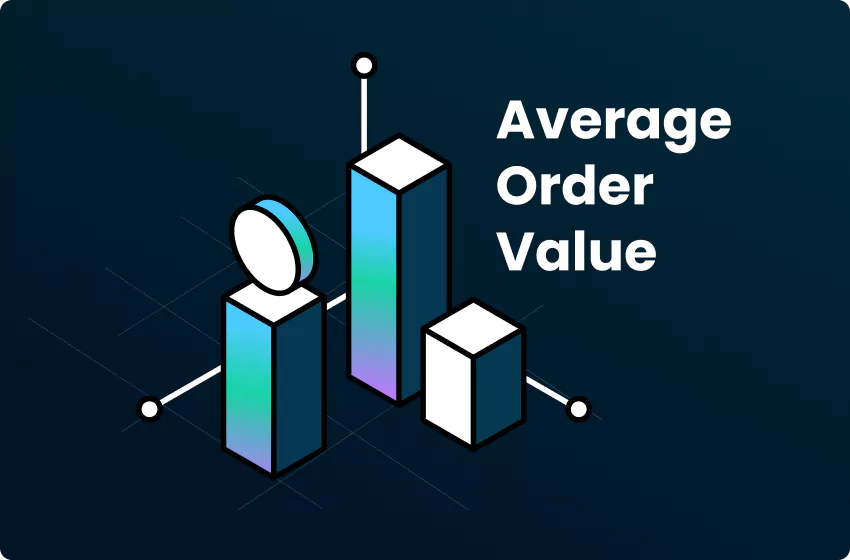

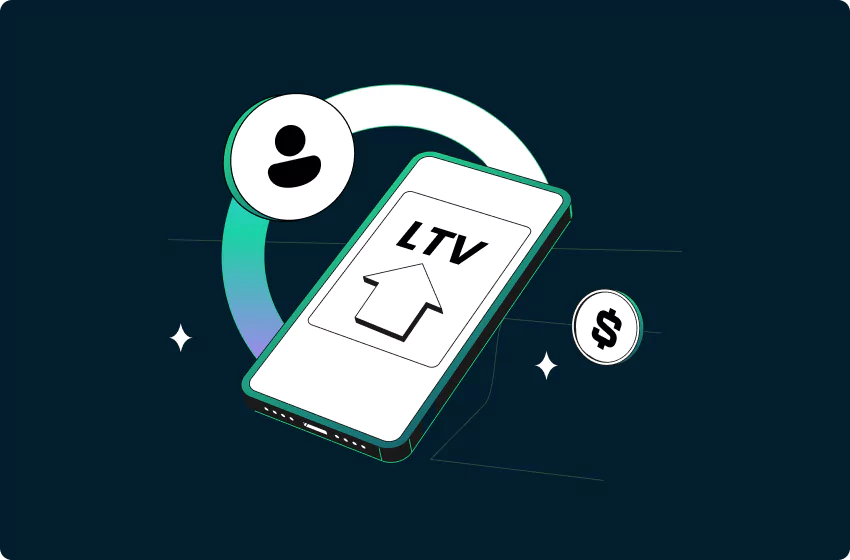
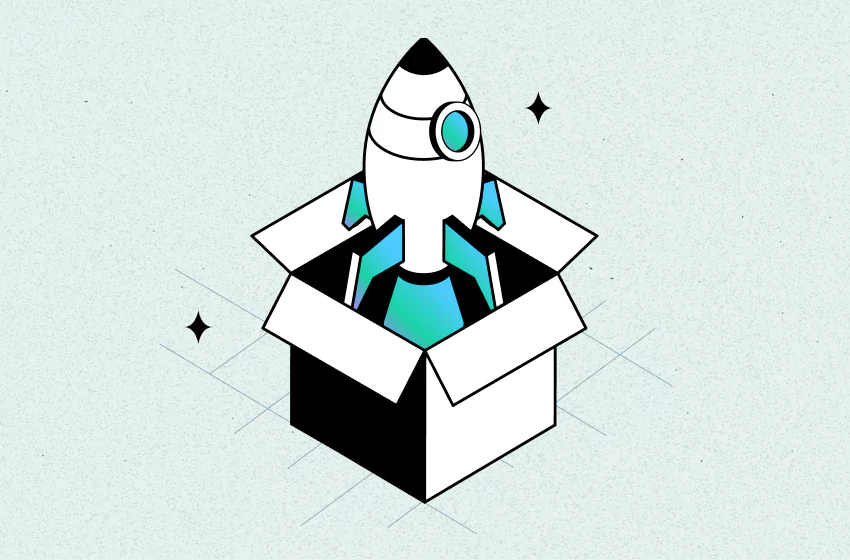
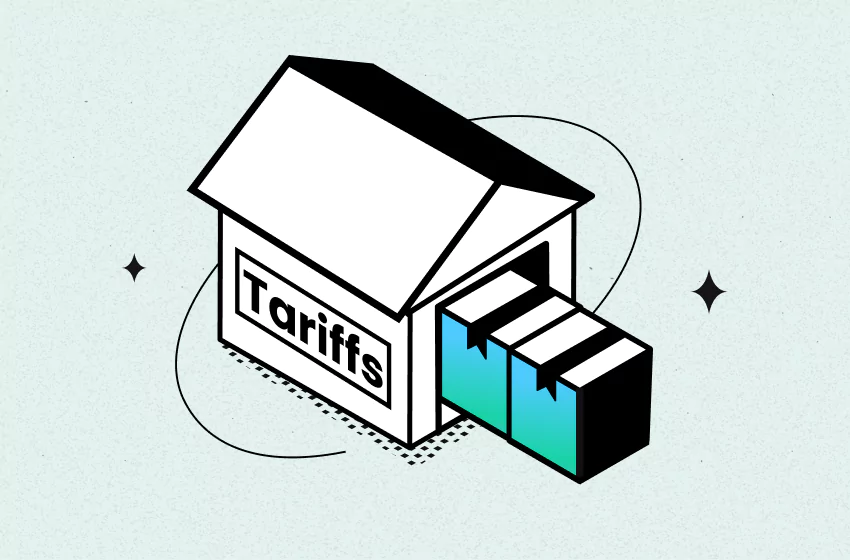


 Shopify profits
Shopify profits





